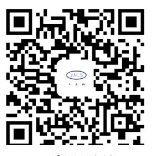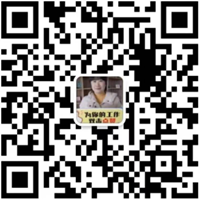基础信息
Section 1: Product Identification
Chemical Name: Lithium hexafluoroantimonate,min. 97%
CAS Registry Number: 18424-17-4
Formula: LiSbF6
EINECS Number: none
Chemical Family: halometallate salts
Synonym: Lithium antimony hexafluoride
Section 2: Composition and Information on Ingredients
Ingredient CAS Number Percent ACGIH (TWA) OSHA (PEL)
Title Compound 18424-17-4 100% 0.5mg/m3 (as Sb) 0.5mg/m3 (as Sb)
Section 3: Hazards Identification
Dust causes burns to skin and eyes, bleeding gums, laryngitis, headache, anemia, skin eruptions, liver and
Emergency Overview:
kidney damage. Fluoride poisoning may cause nausea, diarrhea, and weakness
Primary Routes of Exposure: Contact with skin and eyes. Inhalation of dust.
Eye Contact: Causes burns and serious eye damage. Effects may not immediately appear.
Skin Contact: Corrosive. Effects may not appear immediately. Antimony may cause dermatitis and skin eruptions.
Inhalation of dust causes burning to the respiratory tract, causing coughing, sore throat, and labored
Inhalation:
breathing.
Ingestion: Ingestion may lead to nausea, vomiting, bloody diarrhea, weakness, and convulsions. Lithium salts are toxic.
Burns to eyes and skin. Fluoride poisoning may cause nausea, vomiting and cardiovascular collapse. Lithium
Acute Health Affects:
salts are toxic to the central nervous system.
Prolonged exposure to hydrolysable fluorine compounds can cause deterioration of bone and tooth structure.
Chronic Health Affects: Antimony dust may cause bleeding gums, laryngitis, headache, anemia, skin eruptions, liver and kidney
damage
NTP: No
IARC: No
OSHA: No
SECTION 4: First Aid Measures
Immediately flush the eyes with copious amounts of water for at least 10-15 minutes. A victim may need
Eye Exposure:
assistance in keeping their eye lids open. Get immediate medical attention.
Wash the affected area with water. Remove contaminated clothes if necessary. Apply calcium gluconate jelly
Skin Exposure:
or water soluble calcium salts as antidote. Seek medical assistance.
Remove the victim to fresh air. Closely monitor the victim for signs of respiratory problems, such as difficulty
Inhalation:
in breathing, coughing, wheezing, or pain. In such cases seek immediate medical assistance.
Seek medical attention immediately. Keep the victim calm. Give the victim water (only if conscious). Induce
Ingestion:
vomiting only if directed by medical personnel.
SECTION 5: Fire Fighting Measures
Flash Point: not applicable
Autoignition Temperature: none
Explosion Limits: none
Extinguishing Medium: None. Material is non-flammable.
Special Fire Fighting Procedures: No special fire fighting procedures required.
Hazardous Combustion and If involved in a fire this material may emit corrosive fumes of hydrofluoric acid.
Decomposion Products:
Unusual Fire or Explosion Hazards: No unusual fire or explosion hazards.
SECTION 6: Accidental Release Measures
Small spills can be mixed with powdered sodium bicarbonate, lime, or calcium carbonate and swept up. Avoid
Spill and Leak Procedures: raising dust. Spillage in areas not adequately ventilated may require an evacuation of area. Emergency
response teams will require self-contained breathing apparatus.
SECTION 7: Handling and Storage
Store solid in a tightly sealed container away from moisture. Handle under a dry atmosphere of air or nitrogen.
Handling and Storage:
Prolonged exposure to the atmosphere may degrade the product.
SECTION 8: Exposure Controls and Personal Protection
Eye Protection: Always wear approved safety glasses when handling a chemical substance in the laboratory.
Skin Protection: Wear protective clothing and gloves. Consult with glove manufacturer to determine the proper type of glove.
Ventilation: The material must be handled in an efficient fume hood.
If in form of fine dust and ventilation is not available a respirator should be worn. The use of respirators
Respirator:
requires a Respirator Protection Program to be in compliance with 29 CFR 1910.134.
Ventilation: The material must be handled in an efficient fume hood.
Additional Protection: No additional protection required.
SECTION 9: Physical and Chemical Properties
Color and Form: white to off-white pwdr.
Molecular Weight: 242.68
Melting Point: no data
Boiling Point: no data
Vapor Pressure: not applicable
Specific Gravity: no data
Odor: none
Solubility in Water: soluble
SECTION 10: Stability and Reactivity
Stability: hygroscopic
Hazardous Polymerization: no hazardous polymerization
Conditions to Avoid: contact with moisture
Incompatibility: active metals and strong mineral acids
Decomposition Products: Hydrofluoric acid, metal fluorides and antimony oxyfluorides
SECTION 11: Toxicological Information
RTECS Data: No information available in the RTECS files.
Carcinogenic Effects: no data
Mutagenic Effects: no data
Tetratogenic Effects: no data
SECTION 12: Ecological Information
Ecological Information: No information available
SECTION 13: Disposal Considerations
Disposal: Dispose of according to local, state and federal regulations.
SECTION 14: Transportation
Shipping Name (CFR): Corrosive solids, toxic, N.O.S.
Hazard Class (CFR): 8
Additional Hazard Class (CFR): 6.1
Packaging Group (CFR): II
UN ID Number (CFR): UN# 2923
Shipping Name (IATA): Corrosive Solid, Toxic, N.O.S.
Hazard Class (IATA): 8
Additional Hazard Class (IATA): 6.1
Packaging Group (IATA): II
UN ID Number (IATA): UN# 2923
SECTION 15: Regulatory Information
TSCA: Not listed in the TSCA inventory.
SARA (Title 313): Title compound: See Category Code N010 for reporting.
Second Ingredient: none
SECTION 16 - ADDITIONAL INFORMATION
N/A
 893596907
893596907 

 3003949364
3003949364 


 1273554433
1273554433 

 3007432263
3007432263 

 2881489226
2881489226 

